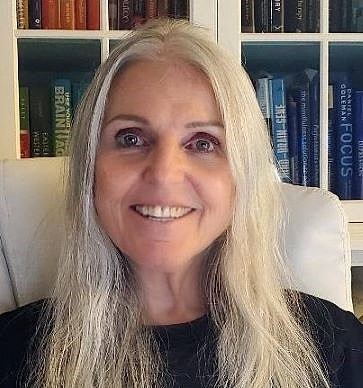
Most of us wish we had more confidence in some area of our life or another. You may be very confident at work but watch it disappear when you go on a date. Or you might enjoy talking in a group but not in front of a room of people.
There are subtle forms of confident behavior, too, such as wearing cutting edge clothes, shoes, hats, accessories … anything that draws attention to you … or, having the confidence to travel alone to a distant place or going to the movies alone.
Why is that we can have confidence in some areas of our life and not others? Confidence is learned, and learning follows from practice. You have to do something to give your brain the chance to learn it, encode it, and get better at supporting you in doing it in similar situations down the road. This is why something that was at first a little (or a lot) uncomfortable is eventually no big deal.
Here are 5 steps you can take to build confidence defined as a feeling of self-assurance arising from appreciation of your own abilities or qualities:
1. Find a role model, someone who models “how-to” for you. They may be someone you know personally or a person in the media or a book or a teacher. Watch them and make note of their way of being that you want to have, too. Note their gestures, voice, face, words, posture, actions. Keep the image of their confidence active in your minds eye by noticing other people who are confident in the same way.
2. Chose one of the aspects of their show of confidence to begin with, and when the opportunity arises, do it yourself as best you can. Copy their physical gestures, or tone of voice. Notice the look on their face and posture. What do they do and say? How do they walk into a room or onto a stage with their face, hands, eyes, feet?
3. Visualize yourself doing, acting, looking confident in the situation that you currently don’t feel confident being in. Visualization is a practice run for your brain cells and connections. It is proven to be so. In fact, visualization techniques are used by most serious or professional athletes today. They see their self on a screen, or as if from a distance, doing whatever it is.
4. Act as if, or “fake it ’til you make it.” Seeing the physicality of the role model’s confidence means you can do it, too. It’s easier to train and change behavior than it is to change thoughts and feelings. So, don’t start there. Trust this will follow. Once these new behaviors are learned by your neurons, and pathways are formed, your brain will generalize in its own magical way, and soon your mind will take the situation on as normal.
5. Practice, practice, practice. People don’t think “Ok, today I’ll be confident,” … they just are. The more you behaviorally portray confidence, the more you will be confident. It’s a learned skill and once learned, you can call on that inner self-assurance to help you out in less confident situations until you learn confidence in those, too. But unlike a bike, where once you learn how to ride one, you can get right back on and easily ride it after not having ridden for a long time, your level of confidence can break down, falter a bit, without practice because the neuronal connections break down after non-use. In fact, they are replaced by the connections that you identify as unconfident. Neuroplasticity is just doing its thing in the brain’s wiring.
When the aspect you’ve focused on learning is learned well, repeat the steps to develop another aspect of confident behavior you want to have for yourself.
So, tell me, where will you begin? Let me know in the comments below. And if you have a specific question, I’ll answer it if I can.
Photo is courtesy of Steven Lewis





This was really an eye opener. I think most of us think of confidence as something you just have naturally, not something you learn.
I would agree with you that most people do. I don’t see the two as opposed to each, like your confidence is either natural or learned. We have inherent levels of confidence, and we can learn how to be more confident than we are naturally. This can happen on purpose and as a result of exposure and practice. This accounts for why we feel confident in some areas more than others.
Thank you for sharing your thoughts!